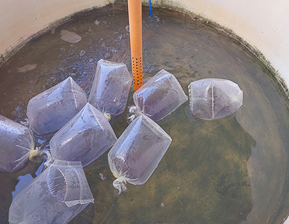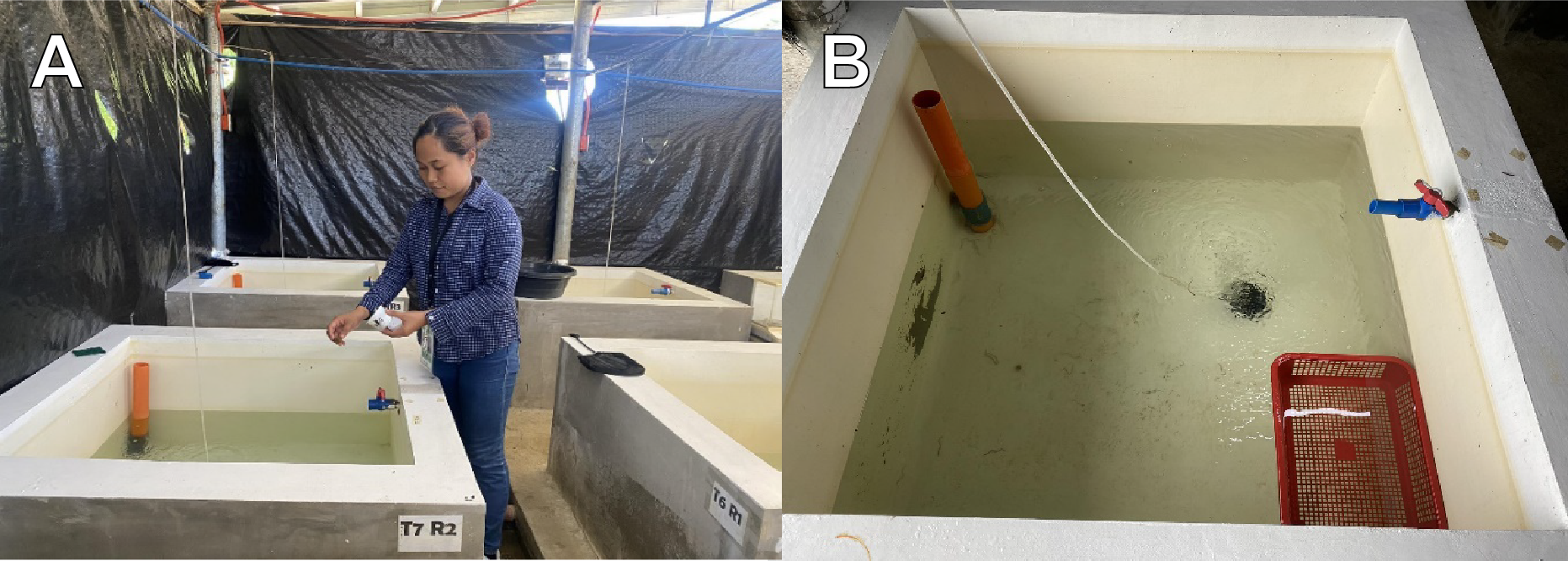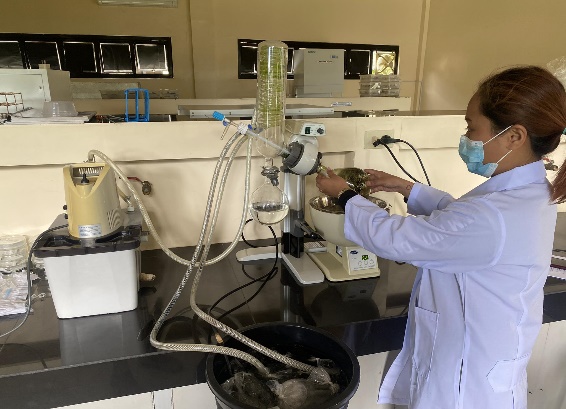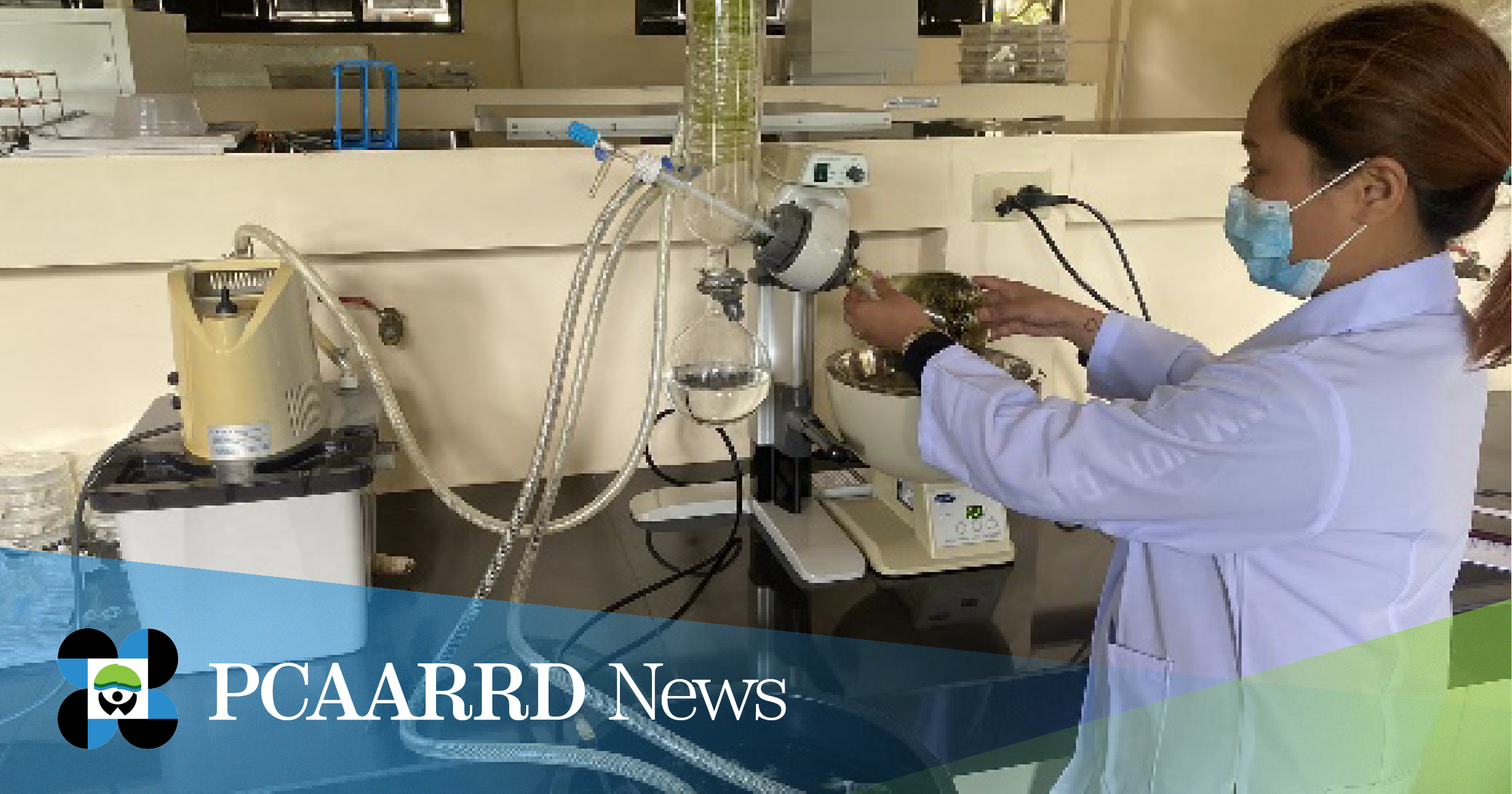Now in its second year of implementation, an Isabela State University (ISU)-led project sought to explore effective ways to increase the survival rate of freshwater eels (Anguilla marmorata).

Acclimatization of glass eel. (Image credit: ISU Project Team)
Freshwater eels, locally known as ‘kasili,’ ‘igat,’ or ‘palos,’ flourish in most of the rivers and estuaries in the Philippines. The country has been one of its major producers as it houses high-value species of eels. However, eels face high mortality rates during culture because of the low quality of water and feeds. This is particularly during their glass eels’ stage, which denotes a phase in their life cycle in which their growth only equates to a human thumb. Despite these mortality rate challenges, there is currently no established protocol for their rearing yet.
Addressing this concern, the “Project 1: Nursery Rearing Performance of glass eel Anguilla marmorata in Pond-Based Culture System” under the Nursery of Eel Enhancement and Development (NEED) Program was implemented.
Funded by the Philippine Council for Agriculture, Aquatic and Natural Resources Research and Development of the Department of Science and Technology (DOST-PCAARRD), the project aims to improve the early weaning and nursery rearing management with different stocking densities and pre-weaning diets of glass eels in pond-based culture system.
During the implementation, the ISU project team utilized kangkong and azolla as they have been proven to contain immunostimulant properties to improve eels’ resistance against Aeromonas hydrophila infection.

Feeding of eels using the pre-weaning diets (A) placed in a feeding tray (B). (Image credit: ISU Project Team)
Aeromonas hyrophila is a species of bacteria that is present both in freshwater and brackishwater environments. Contamination of this kind of bacteria in high levels can cause diseases among the commodities in aquaculture. Aeromonas hydrophila infection is a bacterial infection that affects the eel culture leading to mortalities resulting in low production.

Extraction of kangkong using rotary evaporator (Image credit: ISU Project Team)
For eight months, kangkong and azolla extract served as feed additives to eels. Findings showed that adding 2% kangkong and 2% azolla extract increased the final weight, weight gain, specific growth rate, and survival rate of the sampled eels. The eels also exhibited an improved immune response that help them fight infection and diseases.
Moreover, the project team studied kangkong and azolla’s bioactive components and antibacterial properties to see if they enhance growth performance of eel. Aside from this, they also explored and produced feeds with blended squid and acetes.
Project leader Isagani P. Angeles, Jr. noted during his DOST-PCAARRD Saribuhay episode that eels should be fed daily for six months with a formulated diet until kuroko size or six inches.
Since fishing serves as the primary income source of the communities in Cagayan Valley, the project aspires to contribute in advancing the fisheries industry.
In addition to this initiative, ISU also conducted studies on status, species composition, and diversity of eels in Cagayan, Bicol, Ilocos, Cotabato, and Butuan.
ISU remains dedicated to advancing the eel industry as it plans to keep implementing projects that are geared towards the conservation and management of glass eels.
In the next decades, Dr. Angeles hopes that the eel industry will be further developed and Cagayan Valley will be known as the “Eel capital of the Philippines”.

